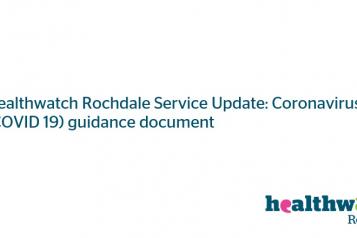What's the difference between social distancing, self-isolation and shielding?

What is social distancing?
Social distancing refers to limiting face-to-face contact with others as much as possible. If you have to go outside you should stay more than two metres (three steps) apart from anyone other than members of your own household.
The Government's advice requires you to stay at home and to only go out for essential reasons such as:
- To collect food
- To exercise once a day
- To work if this cannot be done from home
- For medical reasons, including caring for someone or collecting medication
Remember to wash your hands thoroughly with soap and warm water for twenty seconds when you return to your home.
For more information, see the full government guidance on staying at home and away from others.
Should I be social distancing?
Yes, everyone should be social distancing until the Government instructs otherwise.
Easy read guide on social distancing
Take a look at the easy read guide on social distancing: Keeping away from other people: new rules to follow from 23 March 2020.
What is self-isolation?
Self-isolation is the most effective way to prevent the spread of coronavirus and should be done if you show symptoms of coronavirus - such as a dry cough and/or high temperature. It means that you must stay indoors and where possible, avoid contact with others. This includes stopping day-to-day activities, such as shopping for food or collecting medication.
If you are self-isolating it is a good idea to call on the help of family and friends to help you do tasks where you would need to go outside. If you do not have a close network nearby, contact your local authority or community aid groups for help.
Should I be in self-isolation?
The Government's advice is to self-isolate if:
- You have any coronavirus symptoms, such as a fever above 37.8C, a persistent cough or breathing problems.
- You think that you have been exposed to coronavirus. For example, by being in contact with someone who is displaying symptoms.
- You live with someone who has symptoms of coronavirus.
If you live alone, you should stay at home for seven days from when your symptoms started. If you live with others, then you must stay at home for seven days from when your symptoms started. However, everyone else in the household who is well must stay at home and not leave for 14 days.
Easy read guide on staying at home
Take a look at the easy read guide on staying at home: Coronavirus (COVID-19): advice on staying at home.
Further guidance for staying at home
Take a look at the Government guidance for households with possible coronavirus (COVID-19) infection.
What is shielding or social shielding?
Shielding or social shielding is used to describe how to protect those at highest risk of severe illness if they catch coronavirus. You can shield yourself following the Government guidance, and shield others by minimising all interaction between yourself and those who are most at risk.
Should I be shielding?
If you have received a letter from the NHS identifying you as a patient in the high risk category, you should stay in isolation for a total of 12 weeks from the date you received your letter. If there are any changes to this advice, you will be contacted.
People in this group who think they have developed symptoms of coronavirus should get advice from the NHS 111 online service or call NHS 111.
Easy read guide on shielding
Take a look at the easy read guide on shielding: Guidance on protecting people most likely to get very poorly from coronavirus (shielding).

